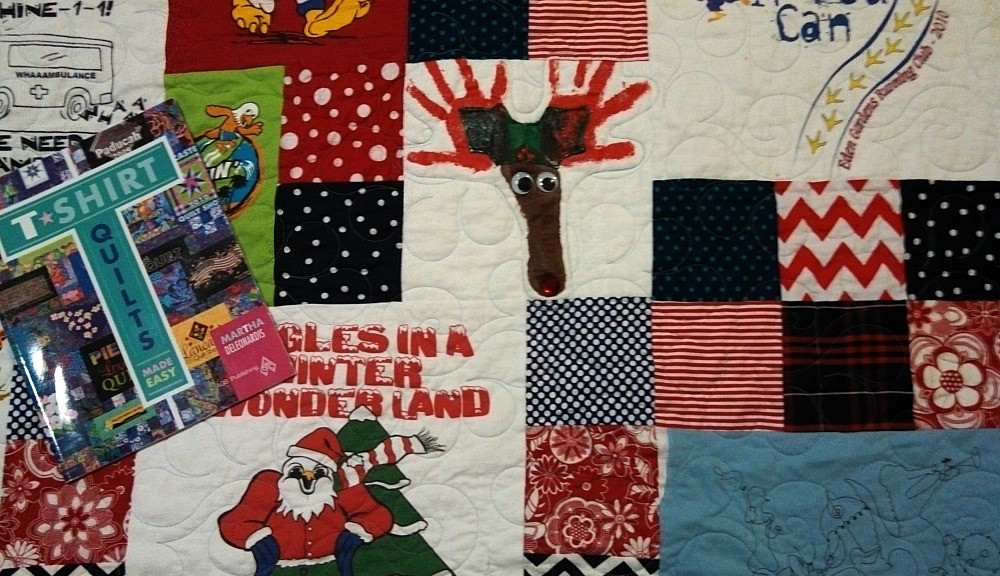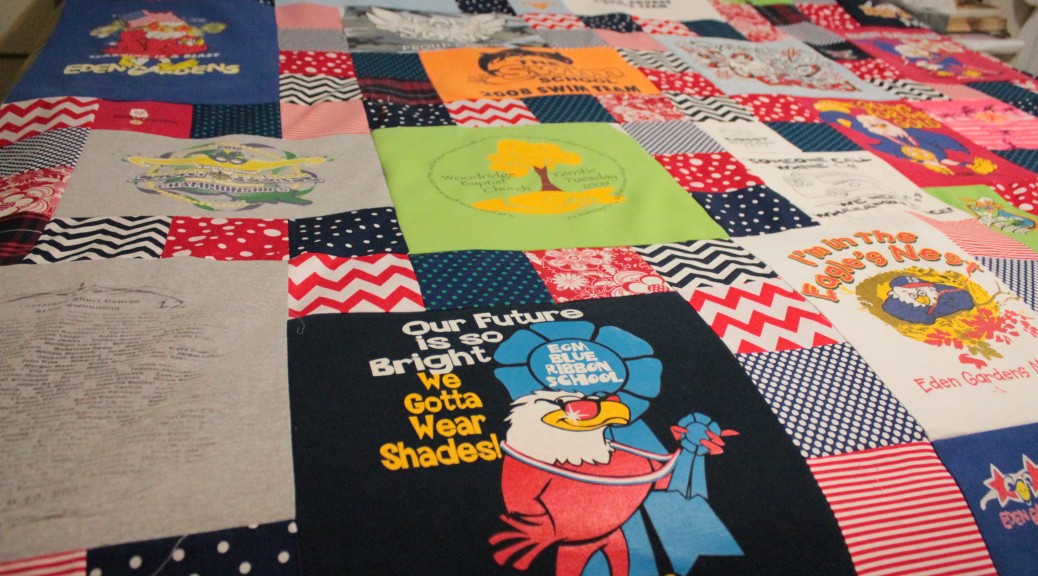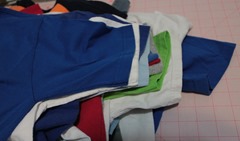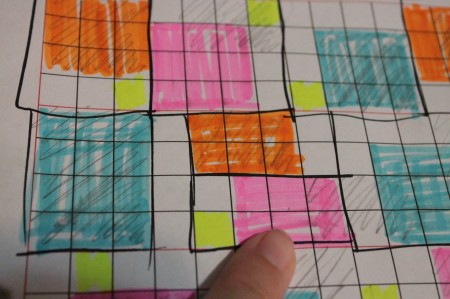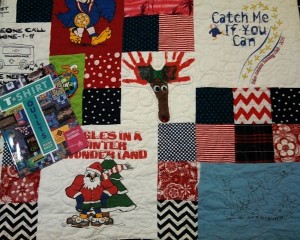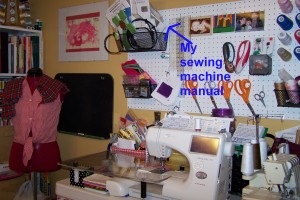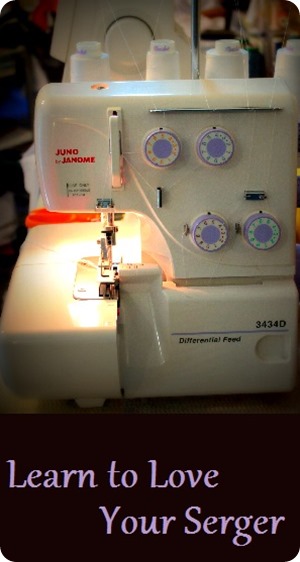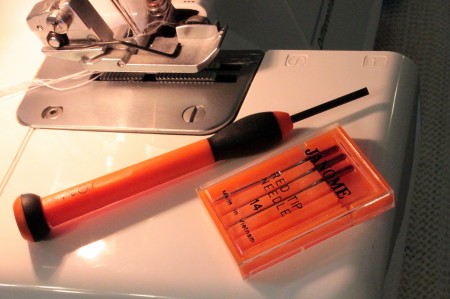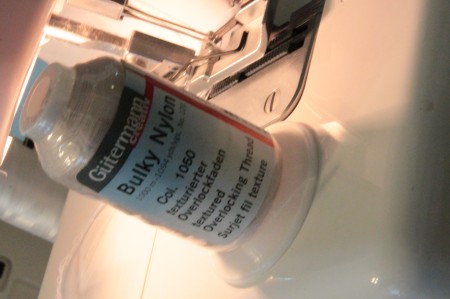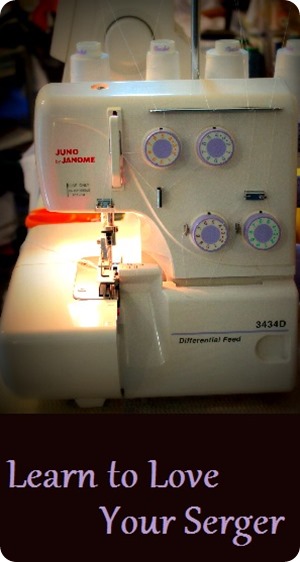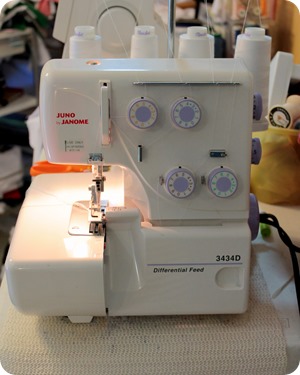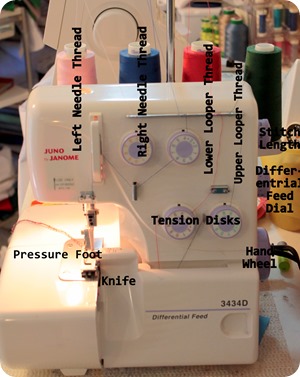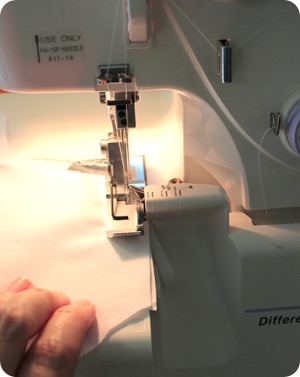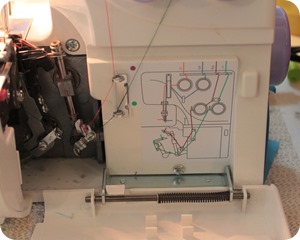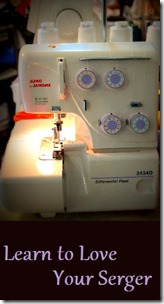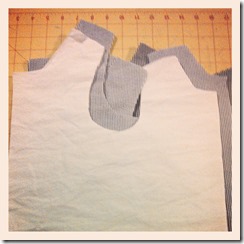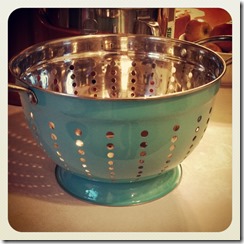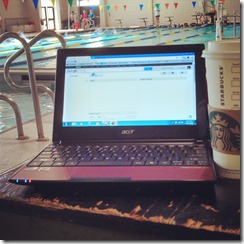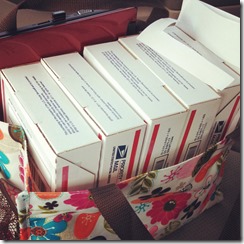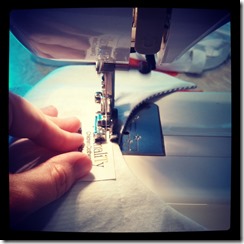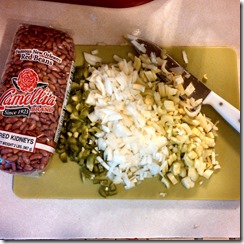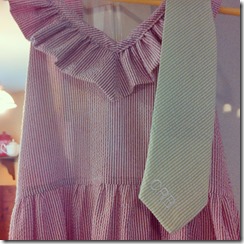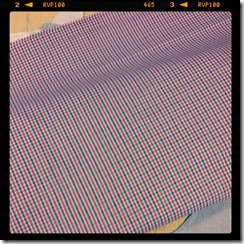T Shirt Quilts Made Easy by Martha Deleonardis
Published in 2012
ISBN: 978-1-60460-014-8
Some Chapter Headings:
- Hints and How-To’s
- Projects
- Gallery
- Easy Planning Guides
I should preface my review with this: I borrowed this book from my mom when I was ready to make my daughter’s t shirt quilt. I’m comfortable sewing and piecing quilt tops. I was looking specifically for information about the coordinating fabrics, what size to cut the blocks, and how-to make all the blocks fit together. This book did that.
I liked:
- “It’s All About the Fabric” section that explained the best way to choose your fabrics for your project. (Spoiler alert: Don’t try to match your tee shirts!)
- The entire “Easy Planning Guides” chapter. To be honest, I skimmed over the other parts and camped out here. I knew I wanted to start with 5 inch squares (a charm pack) so I used her “5 inch Grid Cut Block Chart to get the measures I needed to cut my tees.
My dislikes:
- I found her grids too small for me to work with and designed my own in excel.
Conclusion:
I already know how to sew. I already know how to piece a quilt top in a basic 4-patch or 9-patch. If I didn’t, I’m not sure this book would have helped much. But since I already knew those techniques, I was looking for a book that would help me design a cute t shirt quilt. That’s why I found the discussion about fabrics so helpful. I also love math and grids, so her planning guides were right up my alley. This book does not teach you how to quilt–only piece the quilt top. If you need a book to teach you how to quilt, keep looking.
Would I buy it for myself?
Yes. If I had a stack of t shirts and a basic sewing knowledge, this would be a great place to start.
Would I buy it for a beginner sewer?
Probably not, but for a sewist who has mastered straight seams—you’re good to go!

